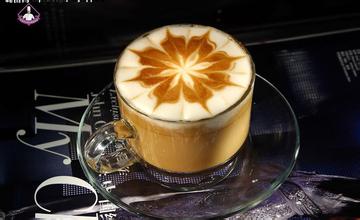Introduction to the flavor and taste of fine coffee beans in Santa Cruz Manor Coffee Variety producing area of Ecuador
The Republic of Ecuador is located in northwestern South America. It is bordered by Colombia in the northeast, Peru in the southeast and the Pacific Ocean in the west. It covers an area of 256370 square kilometers and the coastline is about 930km long. The equator runs across the north of the border, and Ecuador means "equator" in Spanish. The Cologne Islands (Galapagos Islands) is located in the Pacific Ocean, about 900km east from the continental coast, an area of 7800 square kilometers, including 7 large islands and about 70 small islands, all composed of volcanic cones and volcanic lava. Guayaquil is Ecuador's largest city, the main port along the Pacific coast, located in the country.
Pelicans cruising the waters of the Galapagos Islands
Pelicans cruising the waters of the Galapagos Islands
The right bank of the Guayas River in Guayaquil Bay in the southwest is known as the "coastal pearl of the Pacific Ocean". Guayaquil, the largest industrial and commercial city in Eritrea, is also the largest coastal port city in Eritrea, with a population of 2.6 million Ecuador (English: The Republic of Ecuador; Spanish: La Rep ú blica de Ecuador) referred to as Ecuador. It means "equator" in Spanish. They are also called "Equator country" and "Banana country".
When Thomas and the crew landed on the island, they were frantically looking for water and were so thirsty that they squeezed juice from the fat leaves of the cactus to drink. At last a source of water was found in a rocky gully. Thomas attributed it to the gift of God, because it was good Friday, and they had piously celebrated mass before they set out in search of water. But Thomas will never know that the island they landed on is the only island in the Galapagos archipelago that has plenty of fresh water, today's St. Cristobal Island (Saint Cristobal).
St. Cristobal is a larger island in the Galapagos archipelago. At 410m above sea level, there is a small lake called El.Junco, which forms streams along the rocks and volcanic rocks on the southern slope of the island. Mineral-rich fresh water moistens the land of St. Cristobal, keeping the soil moist and fertile. It provides the most rare conditions for the growth of coffee here.
In 1875, 340 years after Frey Thomas de Belanga discovered the island, an indigenous man named Corvus came to St. Cristobal, where he established the Hasunda Coffee Garden and planted about 100 hectares of Arabian bourbon coffee trees. Because the plantation is located between 140m ~ 275m above sea level and the climate is equivalent to that of inland 915m ~ 1830 m, the unique geographical conditions are very suitable for the growth of super hard coffee beans (SHB) with high acidity, so this high-quality coffee has settled down here.
As coffee is consumed by people all over the world, the world coffee industry is also moving towards mass production, while St. Cristobal, a small and unreliable coffee industry, is in trouble and is likely to be forced to give up without profit. It wasn't until the early 1990s that the Gonzalez family bought Hasunda Coffee Park. The localized microclimate caused by the Humboldt current (HumboldtCurrent), strong equatorial sunlight and sharp temperature changes (43 ℃ at sea level and 10 ℃ to 16 ℃ above sea level) provided advantageous conditions that prompted the Gonzalez family to expand their coffee plantation. By reclaiming the early land, the Gonzalez family doubled the size of the coffee plantation.

Important Notice :
前街咖啡 FrontStreet Coffee has moved to new addredd:
FrontStreet Coffee Address: 315,Donghua East Road,GuangZhou
Tel:020 38364473
- Prev

Description of the Flavor of Fine Coffee beans in the Coffee producing area of Jadeite Manor in Panama
Panama has an ideal environment for coffee to grow, pozzolanic soil, good moisture and sun balance. Panamanian coffee grows at an altitude of more than 1400 meters, and the low temperature will make the coffee grow longer, which is more conducive to the development of flavor and aroma. The biodiversity here is very precious, almost all coffee is grown in shade, and the pristine rainforest provides birds and their
- Next

Ecuador Hadassam Coffee Garden Coffee Variety Producing Area Fine Coffee Bean Taste Introduction
Ecuador has a presidential system. On 26 November 2006, Correa, candidate of the Movement for a Sovereign Fatherland, was elected President in the second round of the presidential election and took office on 15 January 2007. After taking office, he pushed for the convening of a constituent assembly. On April 15, 2007, Ecuador decided to convene a constituent assembly with 81.72% support. September, Ecuador holds election of delegates to Constituent Assembly, ruling party leader
Related
- Does Rose Summer choose Blue, Green or Red? Detailed explanation of Rose Summer Coffee plots and Classification in Panamanian Jade Manor
- What is the difference between the origin, producing area, processing plant, cooperative and manor of coffee beans?
- How fine does the espresso powder fit? how to grind the espresso?
- Sca coffee roasting degree color card coffee roasting degree 8 roasting color values what do you mean?
- The practice of lattes: how to make lattes at home
- Introduction to Indonesian Fine Coffee beans-- Java Coffee producing area of Indonesian Arabica Coffee
- How much will the flavor of light and medium roasted rose summer be expressed? What baking level is rose summer suitable for?
- Introduction to the characteristics of washing, sun-drying or wet-planing coffee commonly used in Mantenin, Indonesia
- Price characteristics of Arabica Coffee Bean Starbucks introduction to Manning Coffee Bean Taste producing area Variety Manor
- What is the authentic Yega flavor? What are the flavor characteristics of the really excellent Yejasuffi coffee beans?

